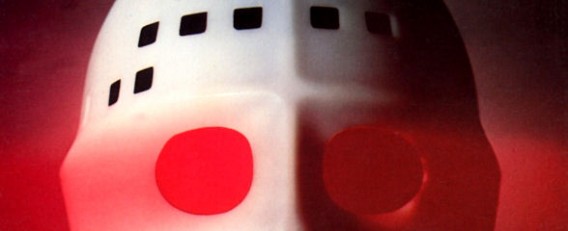Friday the 13th: A New Beginning (1985) Retrospective

Despite Paramount’s best attempts to bring the Friday the 13th franchise to a successful conclusion in 1984 with Joseph Zito’s The Final Chapter, once the studio had seen how the movie had conquered the box office they began devising a way in which the series and, more importantly, Jason Voorhees could make a return to the big screen. Zito had ended his film with Jason receiving a machete blow to the face, before child protagonist Tommy Jarvis hacked him to pieces in self defense. Although the producers had instructed Zito to kill off Jason once and for all, the final shot of the movie had seen Tommy staring into the camera, indicating that he may one day continue Jason’s bloody work. Frank Mancuso Jr., who had joined the franchise in 1981 with Part 2 and had been elevated to producer for the third movie, had since lost interest in the recycled plots and generic slasher conventions and decided to produce the fifth installment at arm’s length, allowing the filmmakers the creative freedom to make the Friday the 13th sequel they felt would draw audiences back to theatres, as the studio were at a loss on how to convincingly bring Jason back from the dead.
In late 1981, as discussions had begun on Friday the 13th Part 3, Martin Kitrosser (who had worked as script supervisor on the first two entries) had written a script in which the character of Ginny had survived the ordeal of Part 2 and had been committed to a mental institution. The producers were concerned that the story would divert too far from the standard Friday the 13th formula and had jettisoned the idea, instead insisting on recycled ideas from the first two films. Kitrosser was once again brought onboard by Phil Scuderi, one of the investors from Boston who had financed the original movie and had retained a degree of creative control over the franchise ever since, to help resurrect Jason in a new and exciting way. Returning to his original concept for Part 3, Kitrosser adapted the script so that it would be Tommy that would be placed in an institution after the death of his mother and his brutal retaliation against Jason. Mancuso Jr., who had agreed to allow the filmmakers space to create the sequel, felt that the violence in the script would most likely cause issues with the MPAA (Motion Picture Association of America) and decided that a rewrite was in order.
Another talent that Scuderi would bring to the project was Danny Steinmann, an independent filmmaker who had first cut his teeth in the mid-1970s with the X-rated movie High Rise. Following a disappointing experience on the horror flick The Unseen, which would prompt the director to remove his name from the picture and instead be credited as Peter Foleg, Steinmann was brought onboard the exploitation flick Savage Streets after its original director, Tom DeSimone, had walked from the project after one of the investors had taken it upon himself to perform constant rewrites. DeSimone’s influence remained on the movie, however, as the cast would include his younger brother, Bob DeSimone, and actress Linda Blair, whom he had previously worked with on the 1981 slasher Hell Night.
Having viewed an early cut of Savage Streets with business partner Steve Minasian, Scuderi contacted Steinmann and offered him the chance to direct Friday the 13th Part V. With issues surrounding Kitrosser’s script, Steinmann hired his friend, David Cohen, to rewrite the entire screenplay with Steinmann consulting. Whilst the mental institution aspect would remain, Steinmann would add an introduction which would see Tommy suffering from nightmares in which Jason rises from his grave, as well as Tommy suffering from hallucinations where he is constantly haunted by visions of Jason.
Another decision that Steinmann would make during the rewrites with Cohen was to reduce Tommy’s dialogue, making him more reclusive and thus sinister. With the story working as a whodunnit, several scenes throughout the movie would hint that perhaps Tommy had become so disturbed by his experience with Jason that he had turned psychotic himself (something that the writers of The Final Chapter had hinted with the climax of their movie). Despite attempting to make the screenplay more commercial and appealing to the studio after Kitrosser’s attempt, Steinmann’s background was in exploitation and Savage Streets had boasted several sequences which featured gratuitous violence or nudity; such as a fight between Blair and a co-star in the girls’ shower room and Blair lying naked in the bath smoking a cigarette. Thus, Friday the 13th Part V would include various scenes of explicit sex and violence, something that would later cause issues with the censors.
With the character of Tommy returning to the franchise, producers immediately contacted young star Corey Feldman, who had previously portrayed the role in The Final Chapter. But in just one short year Feldman’s career had begun to take off, with his supporting turn in the 1984 blockbuster Gremlins followed by another Steven Spielberg-produced genre picture, The Goonies. With Feldman busy working on the latter as Friday the 13th Part V rolled into production, Steinmann was forced to recast the role, although Feldman would agree to make an appearance in the opening sequence (which would be shot at the end of principal photography). Having initially settled on an actor that Steinmann felt was unsuited to the role, just days before principal photography was to commence a UCLA graduate called John Shepherd read for the part and, despite his reservations about starring in a horror movie (Shepherd was religious and worked as a counsellor for a Los Angeles church), made a suitable impression on the director.
In fact, none of the actors who auditioned for roles in the picture were aware that it was a Friday the 13th movie, as when the casting call had been placed the project had been referred to merely as Repetition. One of Shepherd’s co-stars was fourteen-year old Shavar Ross, who had become a household name due to his role in the hit show Diff’rent Strokes. The role of the obligatory ‘final girl’ would go to thirty-year old Melanie Kinnaman who, in a departure from the previous installments, would not be a teenage character but instead an assistant at the institution. The main requirement for Kinnaman’s role would be to run through the rain in a thin, white shirt, thus providing some eye candy for the film’s target audience.
The supporting cast would include Tiffany Helm, who had first turned to acting after following in her mother’s footsteps. Despite failing to launch a successful career post-Friday the 13th, Helm would make an appearance in Tom DeSimone’s women-in-prison classic Reform School Girls the following year, as well as in an episode of the small screen spinoff of A Nightmare on Elm Street, Freddy’s Nightmares. For the role of Violet, one of the young patients who resembled a cross between a punk and New Wave chick, Helm would choose to wear many of her own clothes as at the time she was a huge fan of Siouxsie Sioux. Incidentally, for her death scene - which would be heavily censored by the MPAA due to the actress receiving a machete to the groin - Helm would suggest the piece of music that her character was dancing to, a New Romantic tune by a group called Pseudo Echo called His Eyes (which was first released on their debut album, Autumnal Park, in 1984).
Having worked with Steinmann on Savage Streets, Bob DeSimone was contacted by his brother and advised that Steinmann had been hired to direct the latest Friday the 13th movie. Although all of the principal roles had been cast, DeSimone would receive a small-yet-memorable part. Having first started out as a drummer, DeSimone had gained acclaim for his work as a stand up comedian before eventually turning to acting with appearances in various television shows and commercials. His first movie role was in Tom DeSimone’s 1977 sex comedy Chatterbox, in which a young woman developed a talking vagina that longs to be a successful singer. Following a successful career as an Olympic Gymnast, twenty-year old Juliette Cummins would be cast in Friday the 13th Part V as Robin, a role that would require the actress to appear topless. Cummins would become a regular staple of the slasher genre throughout the 1980s, later appearing in the likes of Psycho III and Slumber Party Massacre II.
Filming commenced in September 1984 and would last for a total of thirty-three days, taking place around Thousand Oaks, California. The set would be riddled with cocaine abuse, although most of the young cast would chose to remain distant from drug use. During the sequence in which DeSimone was snorting cocaine, the actor was given laxatives for babies, whilst the majority of his dialogue in both scenes would be improvised at the suggestion of the director. As with Part 2, there would be two actors who would portray Jason throughout the movie, in one form or another. The climax would reveal that the killings were in fact committed by a paramedic called Roy, whose son had been butchered by one of the mental patients, thus driving him to murder. The part of Roy was played by Dick Wieand, although those sequences in which Roy carries out the murders dressed as Jason would be performed by stuntman Tom Morga, who had previously worked on the first two Star Trek sequels and would later perform similar duties on The Texas Chainsaw Massacre 2 and Halloween 4: The Return of Michael Myers.
The special effects on Friday the 13th Part V: A New Beginning would be supervised by Martin Becker, who had worked on the previous two sequels and would remain with the franchise until 1989′s Friday the 13th Part VIII: Jason Takes Manhattan (sadly, Becker would pass away in 2025 at the age of forty-nine). Due to the explicit nature of the violence, A New Beginning would be submitted to the MPAA a total of nine times before eventually being granted an R rating, with many of the film’s more graphic sequences being severely cut. Released on March 22nd 1985, just eleven months after the supposed ‘final chapter,’ Friday the 13th Part V: A New Beginning would earn just $21.9m at the US box office, approximately $11m less than its predecessor. In their review of the movie, The New York Times stated, “This one, set in a bucolic halfway house for disturbed children, is not entirely without Grand Guignol humor, but almost. It appears to have been paced by a metronome - a joke followed by a murder followed by a joke followed by a murder… It’s worth recognizing only as an artifact of our culture.”
|
||||||||

